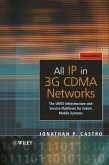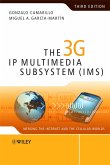What is an 'all-IP' network? What difference will IP networking make to 3G services? Third Generation (3G) mobile offers access to broadband multimedia services - and in the future most of these, even voice and video, will be IP-based. However 3G networks are not based on IP technologies, rather they are an evolution from existing 2G networks. Much work needs to be done to IP QoS and mobility protocols and architectures for them to be able to provide the functionality 3G requires. IP for 3G gives a comprehensive overview of 3G networking functionality and examines how IP protocols can be developed to provide some of the basic building blocks of a mobile system (mobility, QoS and call control) Features: * Clear explanation of how 3G works at the network level. * Review of IP protocol and architectural principles. * Extensive review, classification and analysis of IP mobility protocols - macro and micro- including IPv6. * Analysis of IP QoS protocols and proposed solutions for mobile networks. * Tutorial on SIP (Session Initiation Protocol) and how SIP can be used for multimedia session control. * Description of latest UMTS developments - including Release 5. * Discussion of 4G networks - what does 4G mean? IP for 3G will appeal to mobile telecommunications and network engineers who want to know about future developments as well as system designers and developers. Students and academics on postgraduate courses related to telecommunications, especially 3G networking or IP protocols, will find this text ideal supplementary reading, only assuming a general knowledge of GSM and general networking principles.
Dieser Download kann aus rechtlichen Gründen nur mit Rechnungsadresse in D ausgeliefert werden.









